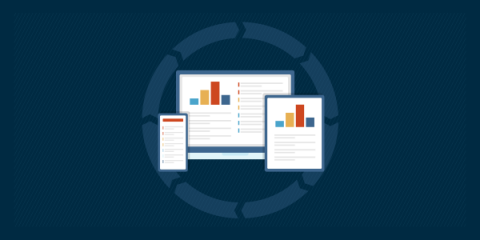Operations | Monitoring | ITSM | DevOps | Cloud
MSP
The latest News and Information on Managed Service Providers and related technologies.
N-able Collaborates with JCDC to Help Create a More Secure Global MSP Ecosystem
N-able Strengthens Diversity, Equality, and Belonging Commitment by Signing the CEO Action for Diversity and Inclusion Pledge
JCDC Collaboration Shows Security is a Team Sport for MSP Industry
Back in January, the Cybersecurity and Infrastructure Security Agency (CISA) issued an advisory notice specifically talking about RMM providers being targeted by cybercriminals. We’ve known that as a group we’ve been a target for a few years, with the bad guys continuing to look at the RMM solution providers as a route into small businesses, because there are still dollars to be made there.
3 Ways to Ensure You're Set Up to Grow Your MSP Business in 2023
I’m hearing a lot of talk around the industry about M&A slowing down. However, the reality I’m seeing is that while the initial landgrab may well have blown over, the change in the cost of borrowing is forcing MSPs that are looking to grow by acquisition to think much more strategically. Instead of doing multiple acquisitions in a year, these companies and their PE backers are doing a smaller number of very strategic, larger acquisitions.
How Visibility Makes Empathy Easier, From the IT Desk to the End-User
Rojan saves thousands on IT management with ManageEngine OpManager
4 Elements to Create an Effective IT Automation Strategy
As more and more organizations undergo digital transformation, IT automation is becoming more important and essential to implement. A report by Smartsheet found that more than 40% of those surveyed spend about a quarter of their time working on repetitive tasks, and almost 70% of them say that automation’s biggest opportunity would be that it significantly reduces the amount of time spent on these tasks.
Endpoint Lifecycle Management Overview
Endpoint management is critical for IT teams. In a SANS survey they found that 44% of IT teams manage anywhere from 5,000 to 500,000 devices. With so many devices, it can be challenging to keep track of the health and status of each individual endpoint. So how can IT teams ensure that organizational endpoints continually contribute to the company’s success? Endpoint lifecycle management is a valuable process that can enable your team to achieve this.
Endpoint Performance Monitoring: Tools and Best Practices
There’s no doubt that the majority of businesses and organizations would struggle to survive without endpoints. Because endpoints directly contribute to a business’s production and success, ensuring that these devices function at peak performance is a top priority for IT teams and MSPs. However, the number of endpoints an organization uses is skyrocketing, and now the average enterprise has approximately 135,000 endpoint devices in use.






